Abstract
On discrete trials, two response keys were made available to hungry pigeons and food reinforcement depended on the order in which the required two key pecks occurred. In different phases, only one of the four possible two-peck sequences (left-left, left-right, right-left, and right-right) produced food reinforcement. In each case, the pigeons learned to perform the correct two-peck sequence more often than the incorrect sequences. Furthermore, the course of differentiation mastery indicated that both reinforcement history and response-reinforcer contiguity influenced performance. These results reveal that response patterns comprising two instances of the same response left-left and right-right) or instances of two different responses (left-right and right-left) may function as operants, thereby extending the generality of conditioning principles from discrete responses to structured sequences of behavior. These and other results are discussed in terms of contiguity-based and memory-based models of learning.
Keywords: response differentiation, response patterning, procedural-functional operant, response-reinforcer contiguity, short-term memory, key peck, pigeons
Full text
PDF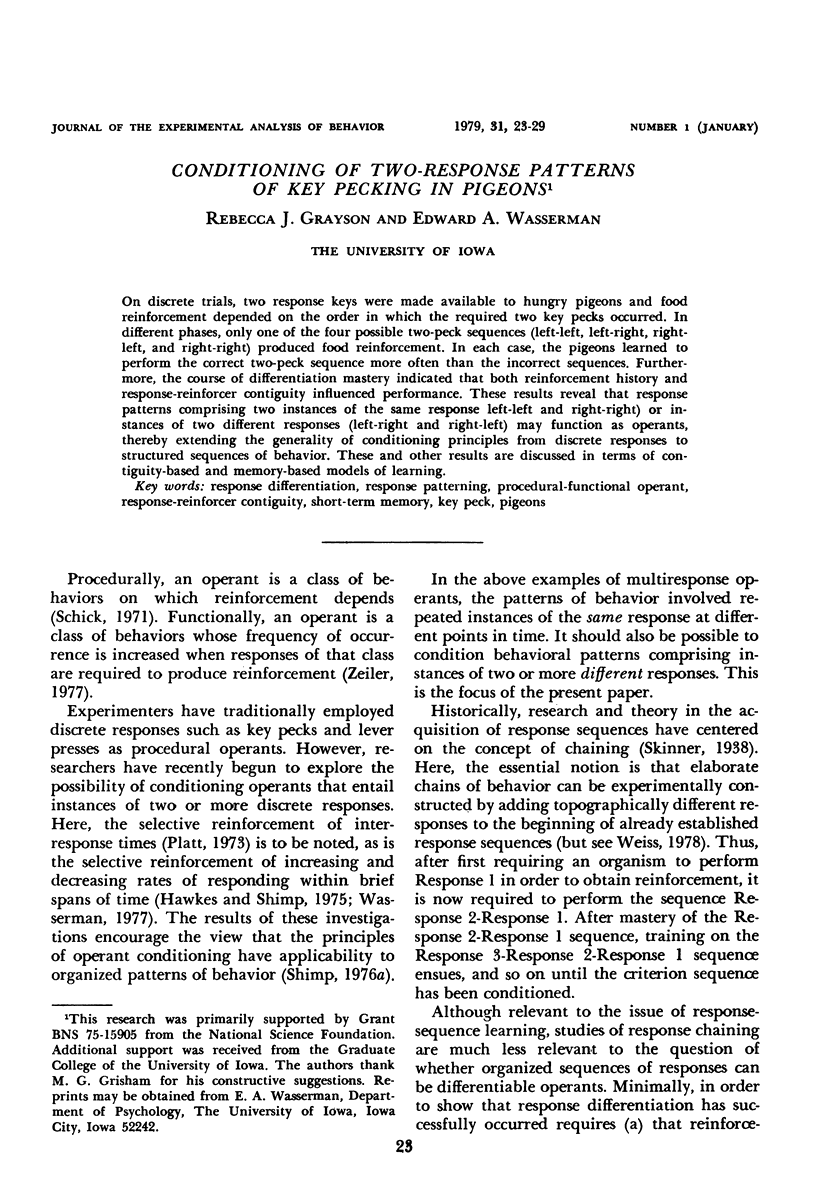
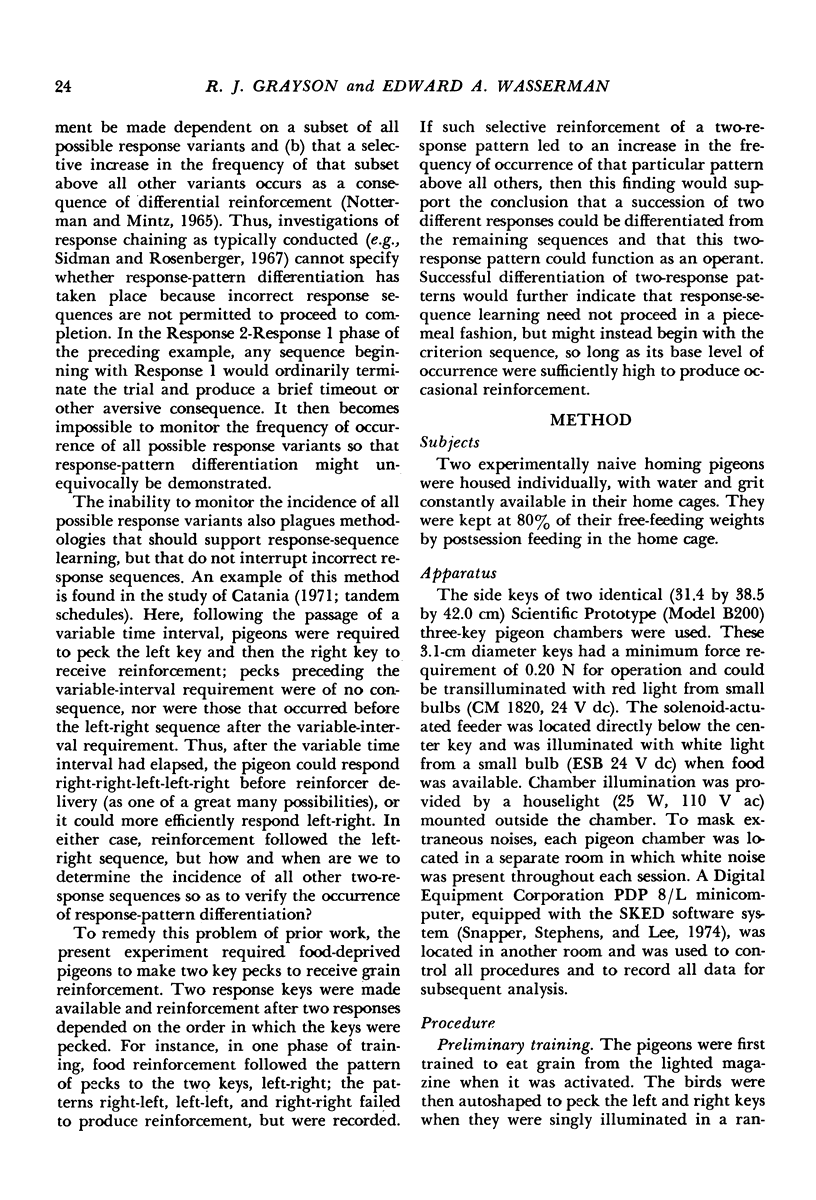
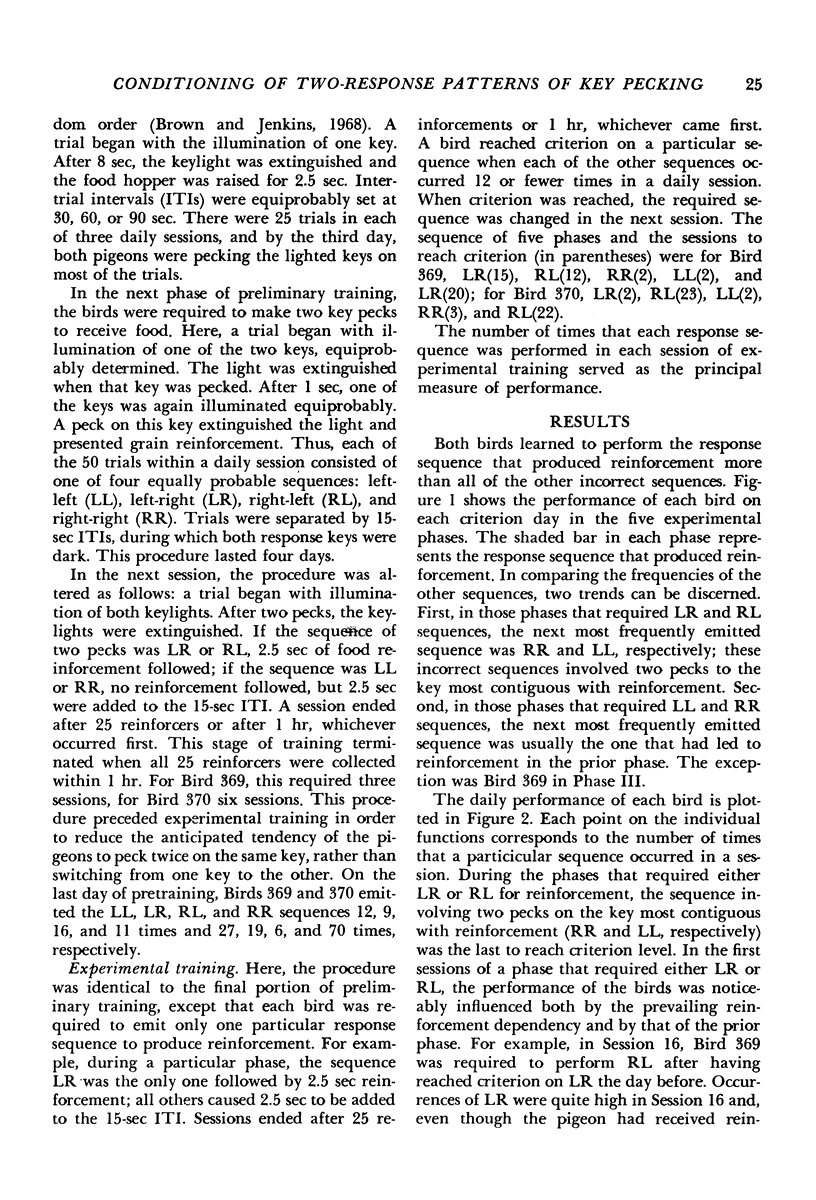
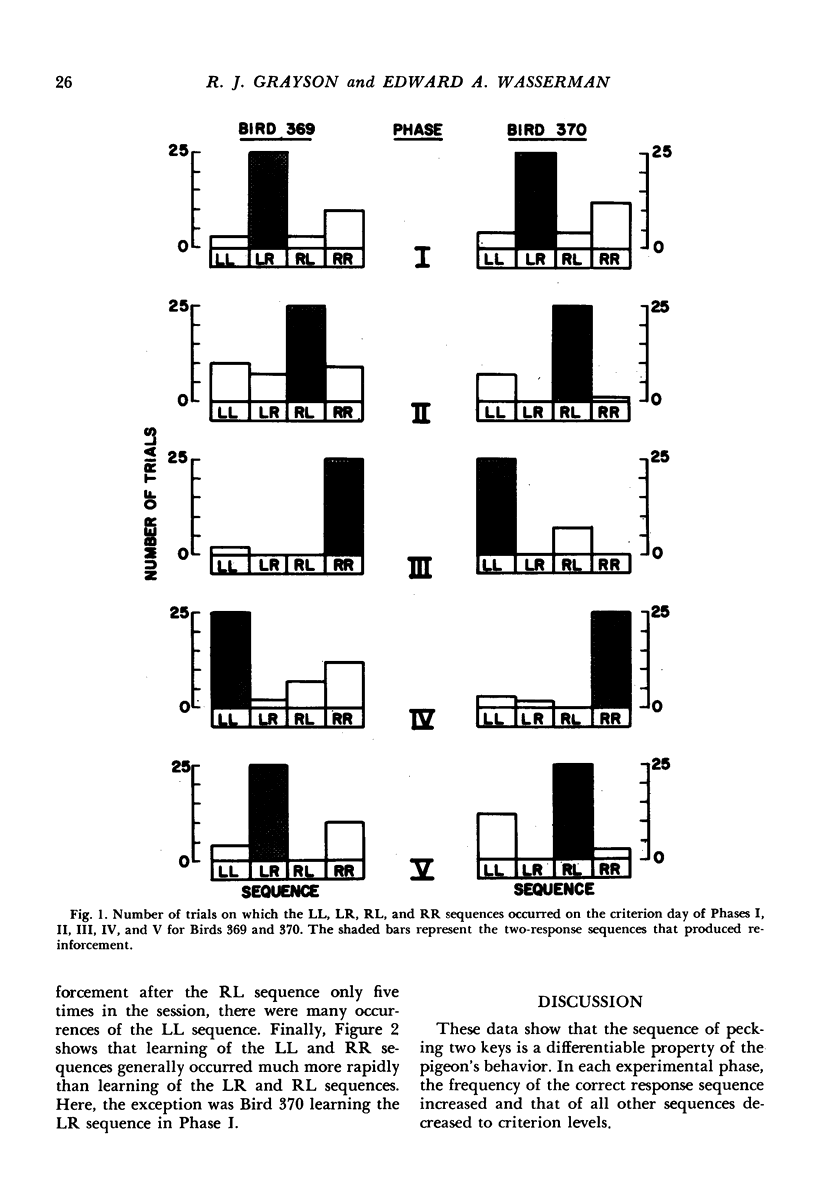
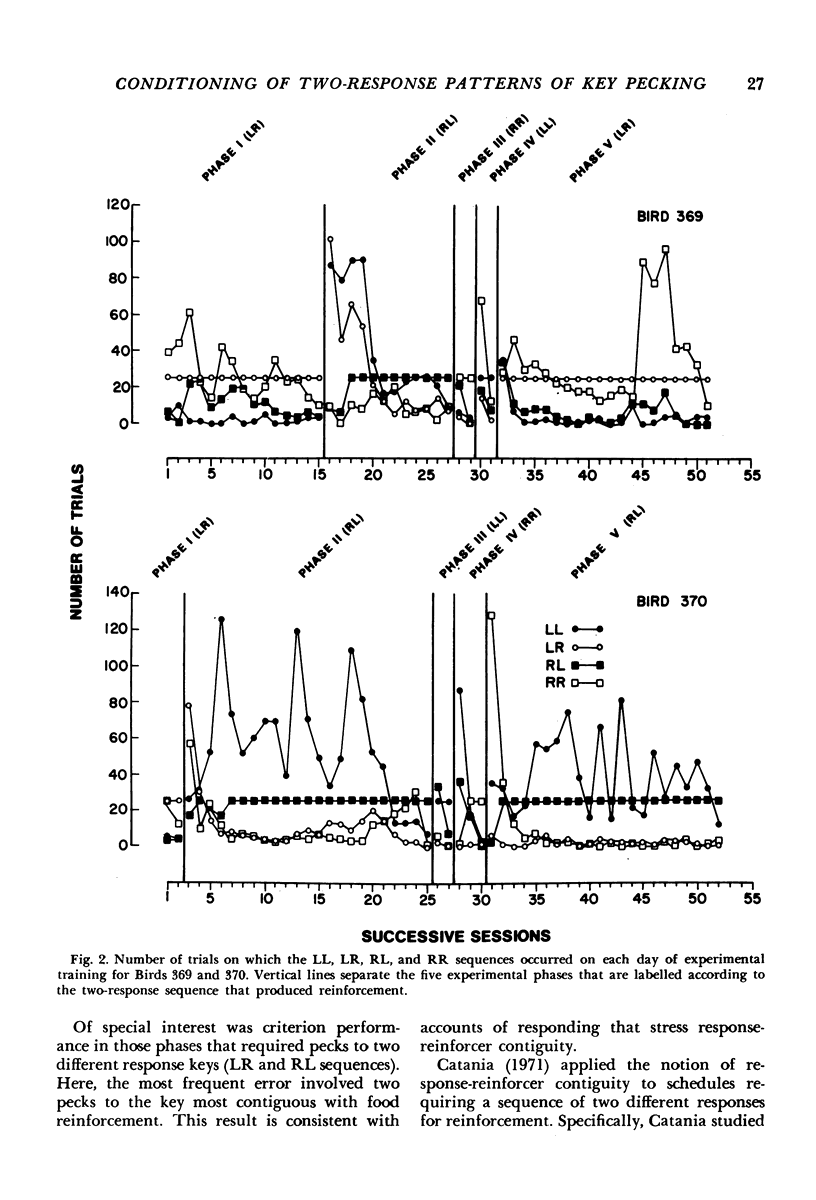
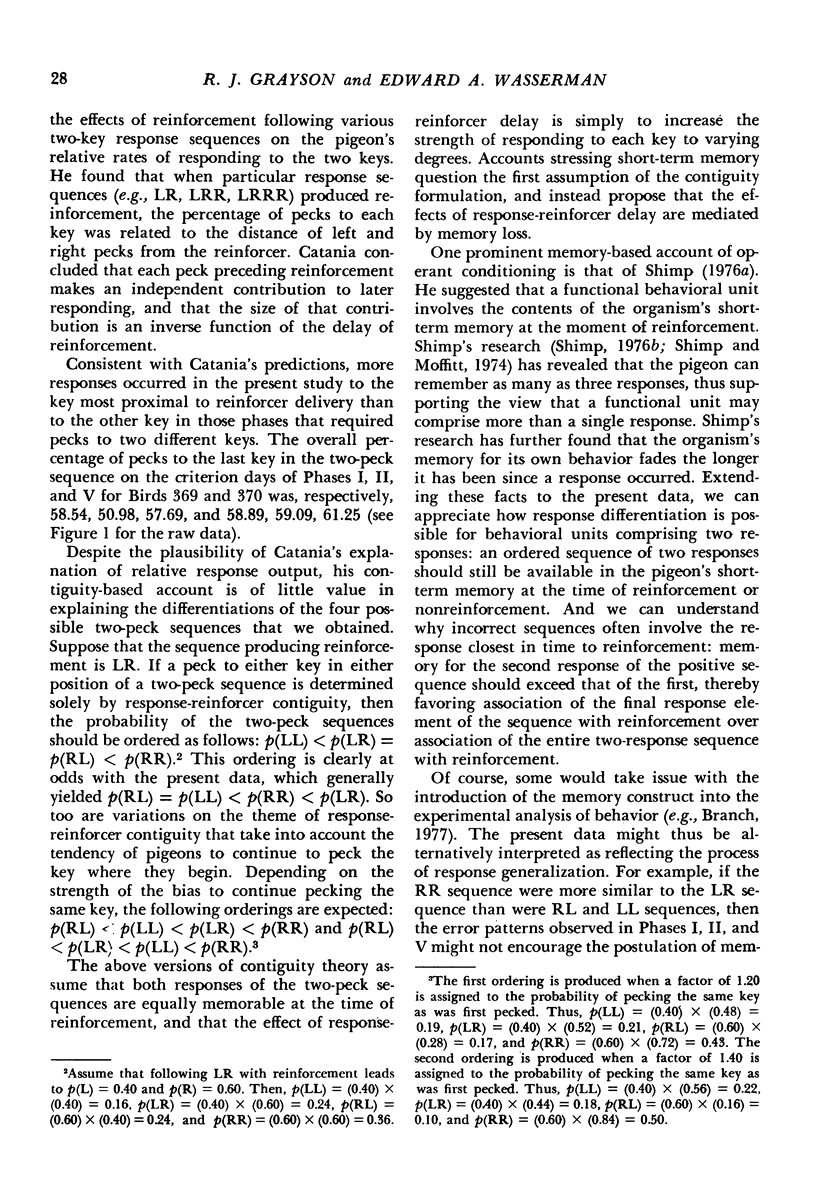
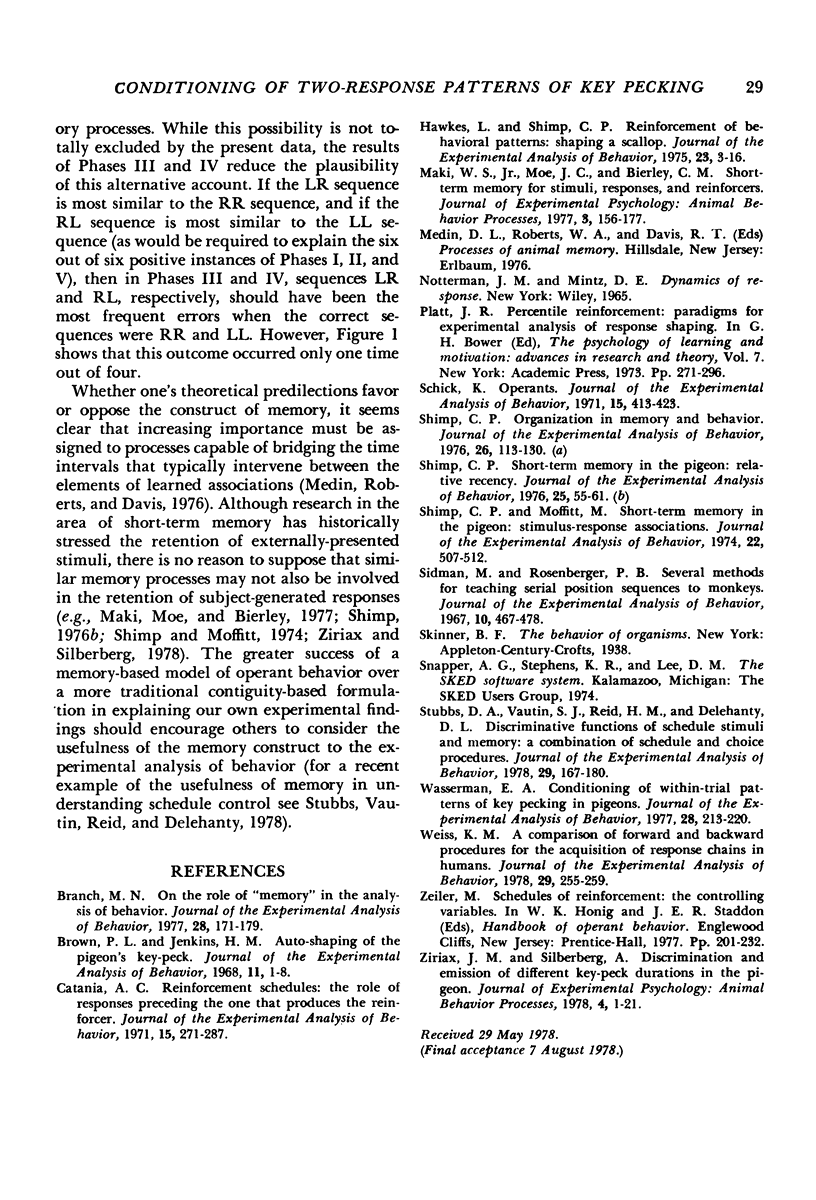
Selected References
These references are in PubMed. This may not be the complete list of references from this article.
- Branch M. N. On the role of "memory" in the analysis of behavior. J Exp Anal Behav. 1977 Sep;28(2):171–179. doi: 10.1901/jeab.1977.28-171. [DOI] [PMC free article] [PubMed] [Google Scholar]
- Brown P. L., Jenkins H. M. Auto-shaping of the pigeon's key-peck. J Exp Anal Behav. 1968 Jan;11(1):1–8. doi: 10.1901/jeab.1968.11-1. [DOI] [PMC free article] [PubMed] [Google Scholar]
- Catania A. C. Reinforcement schedules: the role of responses preceding the one that produces the reinforcer. J Exp Anal Behav. 1971 May;15(3):271–287. doi: 10.1901/jeab.1971.15-271. [DOI] [PMC free article] [PubMed] [Google Scholar]
- Hawkes L., Shimp C. P. Reinforcement of behavioral patterns: shaping a scallop. J Exp Anal Behav. 1975 Jan;23(1):3–16. doi: 10.1901/jeab.1975.23-3. [DOI] [PMC free article] [PubMed] [Google Scholar]
- Schick K. Operants. J Exp Anal Behav. 1971 May;15(3):413–423. doi: 10.1901/jeab.1971.15-413. [DOI] [PMC free article] [PubMed] [Google Scholar]
- Shimp C. P., Moffitt M. Short-term memory in the pigeon: stimulus-response associations. J Exp Anal Behav. 1974 Nov;22(3):507–512. doi: 10.1901/jeab.1974.22-507. [DOI] [PMC free article] [PubMed] [Google Scholar]
- Sidman M., Rosenberger P. B. Several methods for teaching serial position sequences to monkeys. J Exp Anal Behav. 1967 Sep;10(5):467–478. doi: 10.1901/jeab.1967.10-467. [DOI] [PMC free article] [PubMed] [Google Scholar]
- Stubbs D. A., Vautin S. J., Reid H. M., Delehanty D. L. Discriminative functions of schedule stimuli and memory: a combination of schedule and choice procedures. J Exp Anal Behav. 1978 Mar;29(2):167–180. doi: 10.1901/jeab.1978.29-167. [DOI] [PMC free article] [PubMed] [Google Scholar]
- Wasserman E. A. Conditioning of within-trial patterns of key pecking in pigeons. J Exp Anal Behav. 1977 Nov;28(3):213–220. doi: 10.1901/jeab.1977.28-213. [DOI] [PMC free article] [PubMed] [Google Scholar]
- Weiss K. M. A comparison of forward and backward procedures for the acquisition of response chains in humans. J Exp Anal Behav. 1978 Mar;29(2):255–259. doi: 10.1901/jeab.1978.29-255. [DOI] [PMC free article] [PubMed] [Google Scholar]


